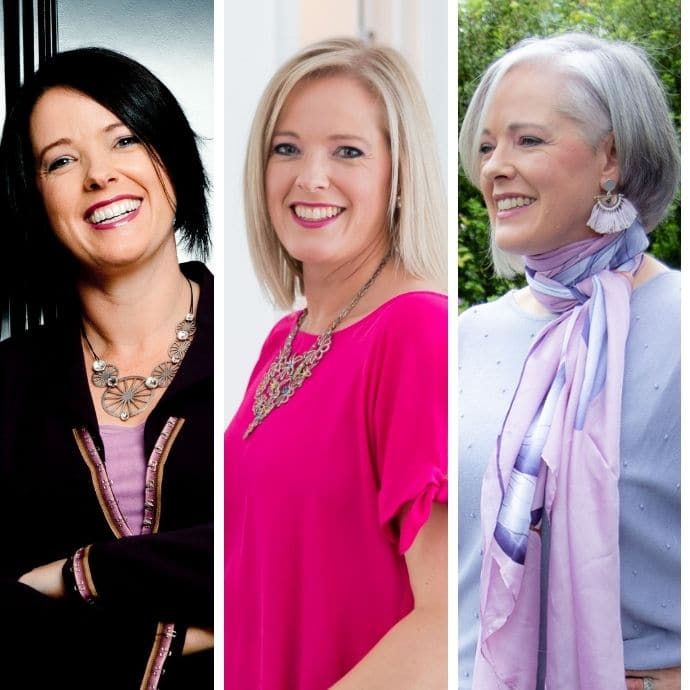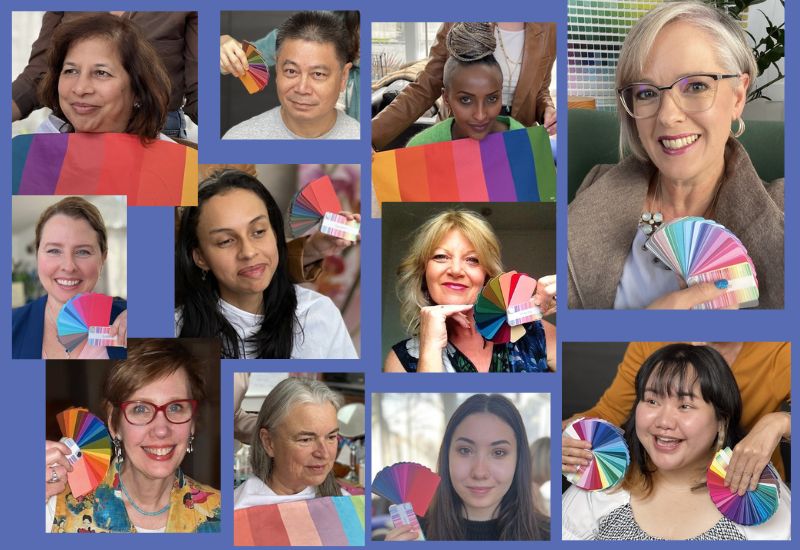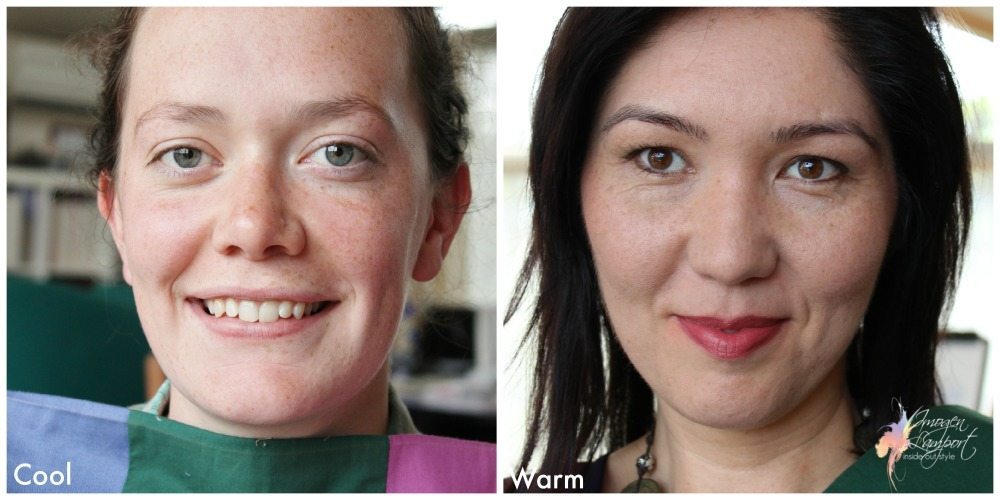There are a few myths that I hear and see around personal colour analysis that I want to debunk. Strap yourself in, here goes…
1. Your Palette Never Changes
This is the biggest myth that I hear, and yet it’s obvious that colouring changes, particularly as hair colour changes. When I was young I had very dark brown hair and very clear white skin, as I’ve aged, my hair has gone grey to white and my skin is no longer alabaster, it’s now a light beige. If I tried to dye my hair back to my “natural” colour it would look super harsh on my skin, as my skin is no longer that clear.
As my hair colour changed from dark brown to blonde and now light grey, I went from a dark palette to a light one.
As my skin has become softer with age, so have the colours changed and softened some.
My undertone hasn’t changed, but my colouring has, and how I put my colours together has changed hugely over the years. This is why a good colour analysis also takes into account your idea value, your value contrast and your colour contrast, as these are the keys to using your palette and putting colours together in a way that creates harmony with your unique colouring.
My advice is to get a new colour analysis anytime you make a major hair colour change (dark to light as an example) or every 5-10 years (as your skin changes with time) or just when you feel like the colours that used to look fabulous no longer feel quite so good.
2. All Freckles are Warm
Another myth, there are two sorts of melanin (the pigment in our skin that “tans”) and one is warm the other is cool. So whether it’s a tan or freckles, the melanin you have will relate to your overall colouring and be the same undertone as your skin.
When doing a colour analysis you need to look past the freckles to the whole complexion and the undertone of the skin (and interestingly, freckles fade with age, often by the time you’re 50 they’ve basically disappeared!).
3. You Can be Neutral
In the 20+ years I’ve being doing personal colour analysis, I’ve yet to find a truly neutral complexion. I think this idea started because so many of the colour systems around only had options for the more extreme warm or cool complexion. But in my system, I have four palettes that are either slightly cool or slightly warm, and this is not uncommon colouring. I’ve not found anyone who looks good in both warm and cool colours (and apart from “true red and true green” there are not many “true neutral undertone” colours). Yet I have a lot of clients who fit perfectly into these slightly warm or slightly cool colour palettes.
One of the reasons I developed 4 close to neutral (but not neutral) colour palettes, was that there are so many people who fit these palettes who were dissatisfied with the seasonal colour analysis they had received because they didn’t feel it was accurate. When they get their Intriguing or Sophisticated palettes (two of the four of these palettes in my Absolute Colour System) they feel like they’ve come home and have finally found the right palettes that really do suit them.
4. You Can Tell Your Undertone from the Veins in Your Wrist
I think this advice confuses more people than helps. I never use veins in wrists to find undertone for two reasons. It’s your face complexion that makes you look healthy or ill, not your wrists, and people’s wrists generally get more sun damage than their faces (which more people take care of) so I’ve seen different colouring on lower arms compared to faces. I’ve also had clients who have used skin whitening products that have cooled down their facial complexion yet their arms and wrists are still warm in undertone.
Supposedly blue or purple veins mean cool undertones, whilst green means warm, yet when I check out mine, there is both a blue-purple appearance as well as a greenish tinge, and I’m very cool!
The reality is that other factors influence vein colour including blood oxygen levels and skin thickness, which makes the test unreliable, particularly for those with olive or darker skin tones.
5. Colour Analysis is Only For Women
Yes more women get colour analysis’ than men, but that doesn’t mean it’s not as valuable or even more valuable for men. Most men don’t wear makeup, so they can’t hide their complexion looking pasty like women can with some foundation and blush. Choosing the colours that are in harmony and balance with you, whatever your sex (or how you identify) has a big impact on everyone. Plus when you have a palette of colours that work together (as my palettes do) you’ll find it easy to mix items in your wardrobe into outfits as you know those colours naturally go together. This is super important for men where 1 in 10 may have less of an ability to see colours accurately. Knowing that you don’t have to ask someone else if your clothes are clashing before you leave for work makes life so much easier!
6. It’s Only for Fair Skin
This myth arose I believe because early colour analysis was very Caucasian-influenced, developed in North America and Northern Europe it was very fair-skin population biased. New systems, like my Absolute Colour System have been developed from a multicultural perspective with every skin tone in mind which is why I have a way more nuanced set of palettes than any seasonal system and 18 different options. One of the reasons I moved away from seasonal naming was that they make no sense to those of us on the edge of Asia, or who live closer to the equator (wet or dry season?) and where the light has very different qualities to those that are ascribed to the traditional seasonal systems.
7. It’s Just About Clothes
Your palette is a great guide for choosing everything – from hair colouring, to nail polish to glasses and makeup. Your palette is your guide to selecting colours for your accessories, and everything you wear or carry. Plus I’ve had clients use their palette to decorate their homes as well!
Bonus 8th Myth – You Can Get an Accurate Colour Analysis Using the new AI Apps
I’ve talked about it here – and I’ve tested it myself, and the answer is no. It just doesn’t work and I’ll be sharing more about this soon.
Discover Your Colours
If you’d love to discover the palette of colours that suits your current colouring, then you can get a personal colour here (or as part of my 7 Steps to Style program if you want to also understand everything about your style as well as your colours).
More Colour Analysis Tips
Warm vs Cool Grey Hair and How Going Grey May Change Your Wardrobe Choices







